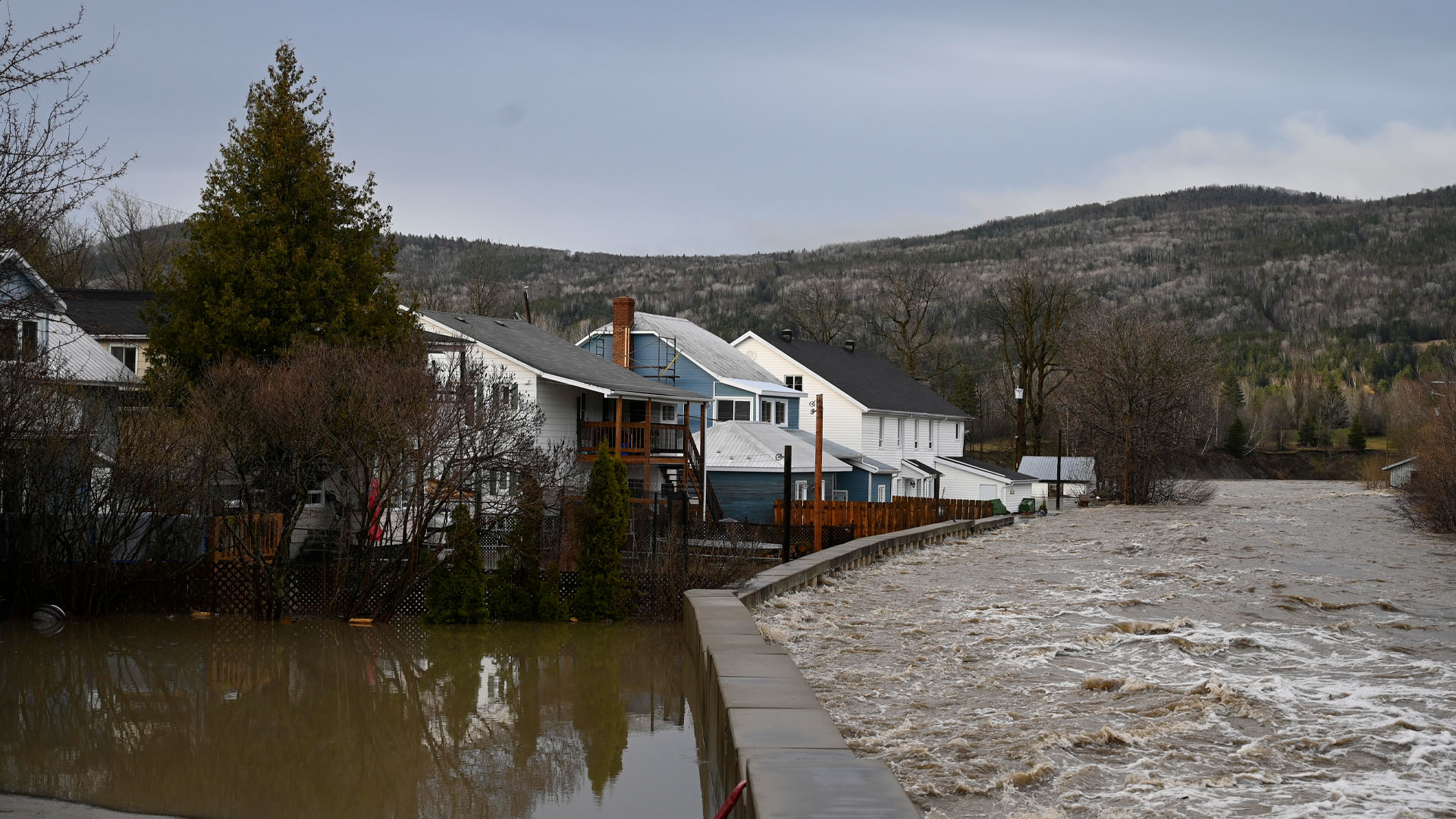
Climate change is resulting in heavier rainfall and increased flooding in many parts of the world.
In Canada, roughly one in 10 households face the double whammy of living in areas at high risk of a deluge, while getting insured in these areas is nearly impossible. Insurance companies, deterred by the high cost of payouts for frequent and severe flooding, seldom offer flood coverage in these areas and, when they do, the premiums are sky-high.
Can the Canadian government protect homeowners who don’t have access to, or can’t afford, insurance from rising rates and rising waters?
The federal government announced in last year’s budget that it would create a low-cost flood insurance program. It would aim to ensure that families in high-risk areas could obtain insurance at affordable rates, thus offering a financial safety net in case of flooding.
As important as it is, flood insurance is not a stand-alone solution. A poorly designed program – divorced from a broader resilience strategy – could encourage further risky housing choices in flood-prone areas.
Why discuss a public national flood insurance program in Canada?
Public Safety Canada and a federally convened task force on flood insurance and relocation estimate that about 90 per cent of Canada’s $2.9-billion average annual flood damage is concentrated in the 10 per cent of homes that are most at risk.
The vast majority of these 1.5 million homes are not insured against flooding, generally because private insurance companies can’t offer affordable coverage without payouts exceeding premiums.
This means homeowners either pay out of pocket or they may receive disaster assistance from federal, provincial and territorial governments if the flooding is deemed severe enough.
Both of these outcomes are untenable as climate change drives an increasing frequency and severity of flooding. Homeowners may be financially ruined by having to bear the costs.
Disaster assistance is essentially free insurance paid by taxpayers. This creates what economists often call a “moral hazard” because there is no incentive for homeowners to reduce their risk.
It can also lead to continued building on floodplains because local governments and developers reap property taxes and profits, while assuming that others will bear the costs of repair or rebuilding.
Another consequence for homeowners is that mortgage lenders may increasingly decline to finance or refinance uninsurable homes in flood zones.
Well-designed, publicly supported national flood insurance could potentially address these problems. Governments could use some of the substantial funds they currently pay out for flood disaster assistance to subsidize affordable premiums in the short term. This would give high-risk households and their mortgage providers certainty about their coverage.
The risks of public flood insurance
Without careful design, however, a low-cost insurance program could continue to lead homeowners to underestimate the risk of, and overestimate their protection from, flooding.
Local governments, believing insurance would protect homeowners, could continue to permit the building of housing in high-risk areas and relax flood-proofing requirements. Both homeowners and governments could remain disinclined to invest in protecting the 1.5 million homes already under greatest threat.
A low-cost flood insurance program could also represent a major financial risk for the federal government.
A similar program in the United States has become a white elephant with diminishing uptake, premiums kept low for political expediency and revenue unable to cover ballooning payouts from more frequent and severe floods. At the end of 2022, the program owed the Treasury US$20.5 billion.
Last year’s federal budget indicated that Ottawa would backstop large payouts for extreme flooding, so smart insurance design, a broader national strategy to reduce flood risk and the political will to deliver on both are critical to make sure such payouts are rare — and that they don’t break the bank.
How to craft smart flood insurance
A low-cost flood insurance program should drive safer decisions about living in flood zones. Three design measures that should be considered include:
1. Specifying exclusions: The insurance program should cover only homes built before it comes into effect. This would set a cap on the pool of insured properties and send a clear message that new homes in high-risk flood zones would not be covered, discouraging interest in developing new housing in those areas.
2. Phasing in risk-based premiums: Premiums should be adjusted over time to reflect a home’s flood risk. This would increase current and prospective homeowners’ awareness and encourage them to reduce their risk. Initially, the program would be likely to offer subsidized premiums to make them affordable, but a planned transition toward fully risk-based premiums would be essential. Long-term support for low-income households would be critical, however, to ensure that risk-based pricing did not disproportionately hurt those least able to afford it.
3. Providing incentives for flood resilience measures: The program should offer reduced premiums for homeowners and communities that bring in measures to reduce flood risk. They could range from structural changes that physically protect properties to land-use practices that enhance natural water absorption and reduce runoff. Reducing premiums for mitigation efforts would lower immediate insurance costs and contribute to greater flood resilience across the country.
Such measures would go a long way to ensuring that low-cost flood insurance doesn’t unintentionally increase risk and cost.
Beyond insurance to comprehensive flood resilience
As the federal task force highlights, a national program alone will not make Canada resilient to increasing risk. Without complementary measures, it’s more likely to create incentives for inaction and bad decisions that could increase the country’s flood risk overall.
The committee points out that Canada also requires comprehensive strategies to address flood risk across the country, including:
1. Actions by all orders of governments to restrict development in floodplains, improve urban drainage systems, build flood-control measures such as dams and seawalls, and help people relocate.
2. Policies that require sellers and lenders to disclose flood risks during real estate transactions. Transparency allows buyers to make informed decisions. It also creates price signals in housing markets to better reflect flood risk.
3. Updates to government disaster financial assistance to complement, rather than conflict with, a flood insurance program. Continued expectations that the government will provide payouts after floods deter insurance uptake and mute signals that households and communities must proactively reduce flood risk.
The details matter
Insurance availability for high-risk areas is needed to ensure that Canadians aren’t left to face increasingly devastating flood losses on their own. The expected insurance program’s success and long-term viability hinge on intelligently designed measures woven into a comprehensive flood-mitigation strategy.
Done poorly, public flood insurance could lead to more damage. Done well, it could protect vulnerable Canadians in at-risk areas by offering immediate financial relief while creating incentives for developing countrywide long-term flood resilience in an overheating climate.










